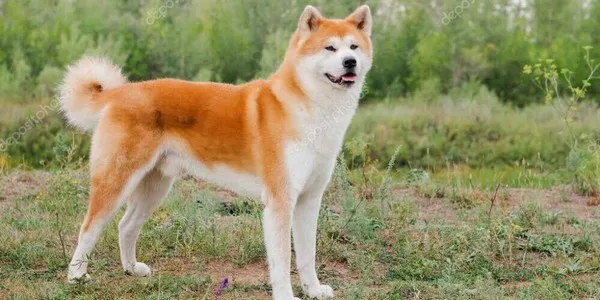Akitas are magnificent and powerful dogs known for their loyalty, intelligence, and regal presence. Originally bred as hunting and guarding dogs in Japan, Akitas have transitioned into beloved family companions worldwide. Like all dog breeds, Akitas require regular exercise to maintain their physical and mental well-being. However, the ideal amount of exercise can vary depending on various factors, including age, health status, and individual temperament. In this article, we will explore the exercise needs of Akitas, the benefits of physical activity, potential risks of inadequate exercise, and tips for incorporating suitable activities into their daily routine.
Exercise Requirements of Akitas
Akitas belong to the large dog breed category, and their exercise needs are influenced by their size and energy levels. On average, adult Akitas require between 1 to 2 hours of exercise daily. Puppies, on the other hand, need less intense activities, as excessive strain on their developing joints can lead to long-term health issues. As with all dog breeds, individual variations are expected, and it is essential to observe each Akita‘s response to exercise and adjust accordingly.
1. Benefits of Regular Exercise for Akitas
Physical Health: Regular exercise promotes cardiovascular health, strengthens muscles, and maintains a healthy body weight. Active Akitas are less prone to obesity, joint problems, and other weight-related issues.
Mental Stimulation: Akitas are highly intelligent dogs, and without sufficient mental stimulation, they may become bored or engage in undesirable behaviors. Exercise provides mental enrichment, reducing the likelihood of destructive tendencies.
Emotional Well-being: Exercise releases endorphins, which are natural mood lifters. Akitas that get adequate exercise are generally happier and exhibit fewer signs of stress or anxiety.
Bonding Opportunity: Daily exercise routines create valuable bonding time between Akitas and their owners. This shared activity strengthens the human-canine relationship and enhances trust and obedience.
2. Types of Exercise Suitable for Akitas
Brisk Walks: Regular walks are a staple of an Akita’s exercise routine. Aim for at least two long walks each day, but be cautious about walking in extreme weather conditions to avoid overheating or paw pad injuries.
Running and Jogging: Akitas have a natural athleticism and enjoy running or jogging alongside their owners. Engaging in these activities can help them release pent-up energy.
Play Sessions: Interactive play sessions, such as fetch, tug-of-war, or puzzle toys, are excellent ways to combine physical exercise with mental stimulation.
Swimming: Many Akitas enjoy swimming, which is a low-impact exercise that is gentle on their joints. Always ensure proper supervision and safety measures when introducing your Akita to water activities.
Hiking: Akitas are excellent hiking companions due to their endurance and strength. Hiking allows them to explore new scents and environments, providing additional mental stimulation.
Agility Training: Engaging in agility exercises can be both physically and mentally challenging for Akitas, promoting their coordination and problem-solving abilities.
3. Adapting Exercise for Different Life Stages
Puppies: Puppies should not engage in high-impact exercises or prolonged activities to protect their developing bones and joints. Short, controlled play sessions and frequent but gentle walks are suitable for their needs.
Adult Akitas: Adult Akitas are at their peak physical condition and require a consistent exercise routine. Regular walks, jogging, and play sessions are essential to maintain their health and happiness.
Senior Akitas: As Akitas age, their exercise needs may decrease. Although they still need physical activity, activities should be less strenuous and more tailored to their specific requirements.
4. Signs of Inadequate Exercise
Insufficient exercise can lead to various health and behavioral issues in Akitas. Look out for the following signs that your Akita might not be getting enough physical activity:
Weight Gain: Obesity is a common consequence of inadequate exercise and can lead to joint problems and a decreased quality of life.
Destructive Behavior: Akitas may become destructive or exhibit excessive barking when they are bored or understimulated.
Restlessness: Akitas that don’t receive enough exercise may show signs of restlessness or pacing.
Aggression: A lack of physical activity can lead to increased aggression in Akitas.
Conclusion
In conclusion, Akitas are powerful and intelligent dogs that require regular exercise to stay physically fit, mentally stimulated, and emotionally balanced. The appropriate amount and type of exercise will vary based on age, health status, and individual temperament. By understanding their exercise needs and incorporating suitable activities into their daily routine, you can ensure that your Akita leads a healthy, happy, and fulfilling life. Additionally, always consult with a veterinarian to create a tailored exercise plan that best suits your Akita’s specific requirements. With proper care and attention, your Akita will thrive as a devoted and loving companion for years to come.
Related Topics:


























